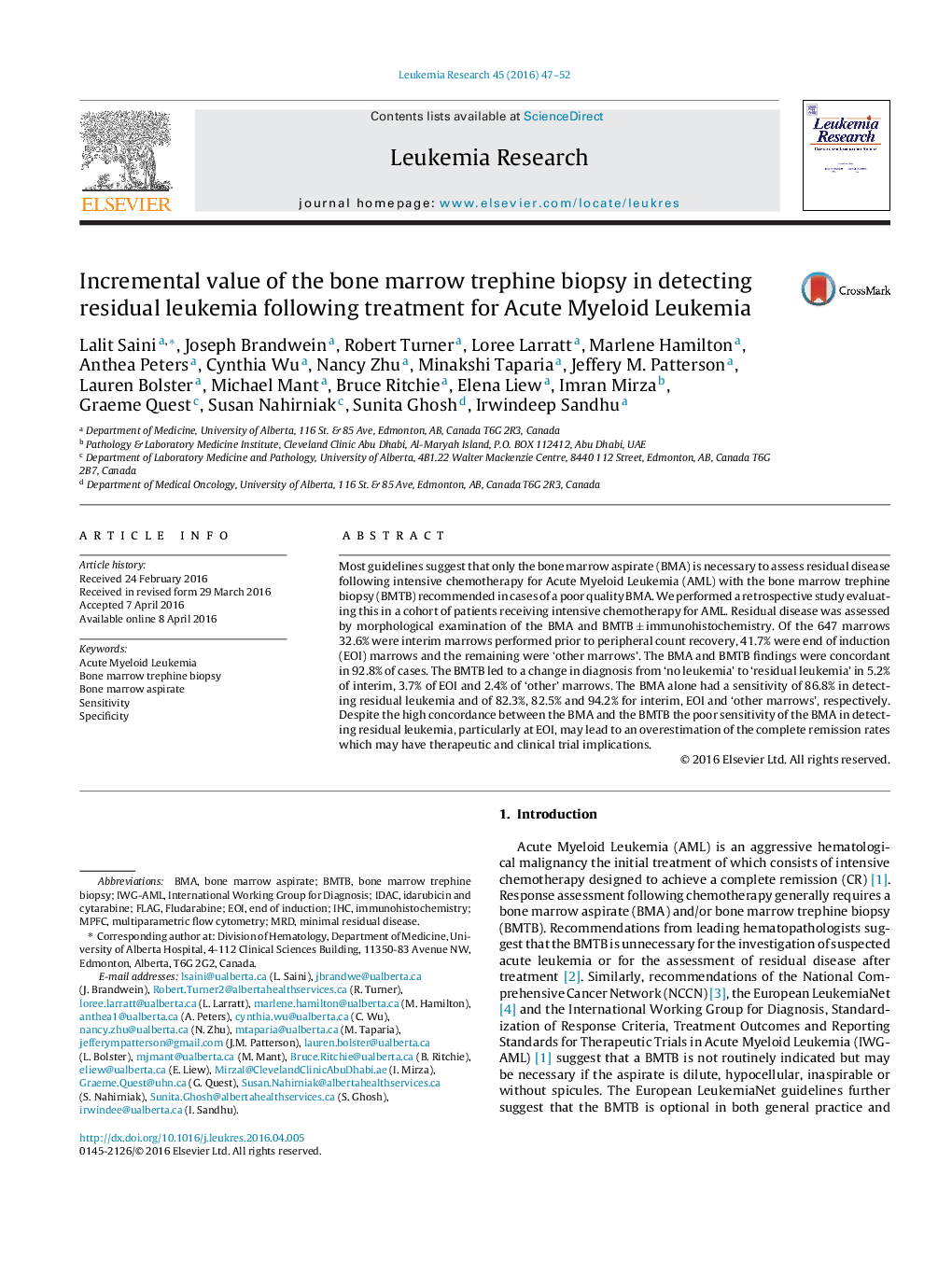| Article ID | Journal | Published Year | Pages | File Type |
|---|---|---|---|---|
| 2136394 | Leukemia Research | 2016 | 6 Pages |
•The value of the trephine biopsy in assessing residual leukemia is unknown.•Following chemotherapy the trephine biopsy aids in detection of residual leukemia.•At other time points the trephine biopsy may not be necessary.
Most guidelines suggest that only the bone marrow aspirate (BMA) is necessary to assess residual disease following intensive chemotherapy for Acute Myeloid Leukemia (AML) with the bone marrow trephine biopsy (BMTB) recommended in cases of a poor quality BMA. We performed a retrospective study evaluating this in a cohort of patients receiving intensive chemotherapy for AML. Residual disease was assessed by morphological examination of the BMA and BMTB ± immunohistochemistry. Of the 647 marrows 32.6% were interim marrows performed prior to peripheral count recovery, 41.7% were end of induction (EOI) marrows and the remaining were ‘other marrows’. The BMA and BMTB findings were concordant in 92.8% of cases. The BMTB led to a change in diagnosis from ‘no leukemia’ to ‘residual leukemia’ in 5.2% of interim, 3.7% of EOI and 2.4% of ‘other’ marrows. The BMA alone had a sensitivity of 86.8% in detecting residual leukemia and of 82.3%, 82.5% and 94.2% for interim, EOI and ‘other marrows’, respectively. Despite the high concordance between the BMA and the BMTB the poor sensitivity of the BMA in detecting residual leukemia, particularly at EOI, may lead to an overestimation of the complete remission rates which may have therapeutic and clinical trial implications.
